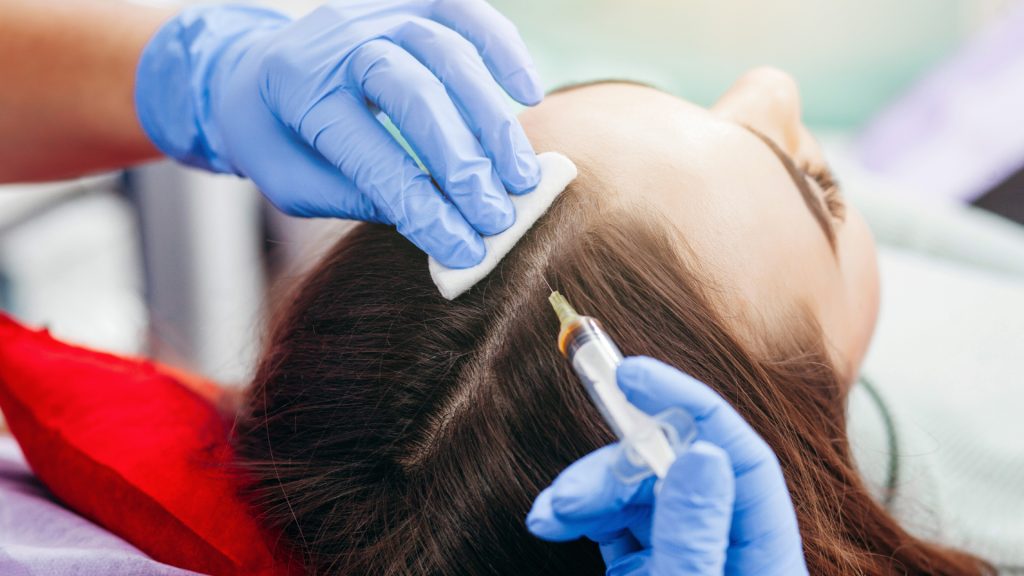Platelet-Rich Plasma (PRP) Hair Treatment is gaining popularity as a non-surgical procedure for individuals experiencing hair thinning or hair loss. This treatment has become a go-to solution for many due to its natural approach in rejuvenating hair growth. It uses the body’s own platelets to stimulate the hair follicles and improve the overall health of the scalp. But what exactly is the science behind PRP Hair Treatment in Dubai? In this article, we’ll dive deep into the underlying mechanisms and processes that make PRP a highly sought-after treatment option for hair restoration.
Understanding Platelet-Rich Plasma (PRP)
To understand how PRP Hair Treatment works, it’s crucial to first grasp the concept of Platelet-Rich Plasma. PRP is a concentration of platelets derived from the patient’s own blood. Platelets, a component of blood, are best known for their role in clotting. However, they also contain growth factors that play an important role in tissue repair and healing.
In PRP Hair Treatment, blood is drawn from the patient’s arm and processed in a centrifuge to separate the platelets from the red and white blood cells. The resulting PRP is then injected into the scalp, specifically into areas that are thinning or balding. The high concentration of platelets is intended to promote hair regrowth by stimulating dormant hair follicles and increasing blood flow to the scalp.
The Role of Platelets in Hair Regrowth
Platelets are rich in growth factors, including Platelet-Derived Growth Factor (PDGF), Transforming Growth Factor-Beta (TGF-β), and Vascular Endothelial Growth Factor (VEGF). These growth factors play a critical role in various cellular functions, such as cell division, tissue repair, and collagen production. When injected into the scalp, they help to activate the hair follicles, promoting hair growth and strengthening existing hair.
One of the main mechanisms by which PRP Hair Treatment works is by stimulating the anagen phase (the active growth phase) of the hair cycle. During this phase, hair follicles produce new strands of hair. By rejuvenating hair follicles that may be in the resting (telogen) phase, PRP helps extend the anagen phase, resulting in thicker, fuller hair.
In addition to stimulating hair follicles, the growth factors in PRP also improve blood circulation within the scalp. Better blood circulation means better oxygenation and nutrient delivery to hair follicles, further supporting their ability to produce healthy hair.
The Process of PRP Hair Treatment
The process of PRP Hair Treatment typically involves several steps, starting with the drawing of blood. Here’s a step-by-step breakdown of how the procedure works:
- Blood Collection: A small sample of blood is drawn from the patient, usually from the arm.
- Centrifugation: The blood sample is placed into a centrifuge, which spins the blood at high speeds to separate the platelets from the other blood components. The result is a concentrated solution of Platelet-Rich Plasma.
- Scalp Preparation: The scalp is cleaned and numbed to ensure the patient is comfortable during the injections.
- Injection of PRP: Using a fine needle, the PRP is carefully injected into the areas of the scalp that are affected by hair loss or thinning.
- Aftercare: After the procedure, the scalp may be sensitive for a short period, but patients can typically resume their normal activities right away.
The Cellular Mechanisms Involved in PRP Hair Treatment
PRP Hair Treatment relies on cellular mechanisms that stimulate hair follicles and improve the scalp’s environment for hair growth. Let’s explore these processes in detail:
- Activation of Hair Follicles: The growth factors in PRP can help reactivate dormant or miniaturized hair follicles, encouraging them to enter the anagen phase. By doing so, PRP Hair Treatment can help slow down or reverse the progression of hair thinning.
- Increased Collagen Production: Collagen is a key structural protein in the skin, and its production is essential for maintaining healthy tissue. The growth factors in PRP promote collagen synthesis in the scalp, which helps support hair follicles and improves the overall health of the scalp.
- Angiogenesis (Formation of New Blood Vessels): One of the significant benefits of PRP is its ability to stimulate angiogenesis. This is the process by which new blood vessels form, improving the blood supply to hair follicles. With increased circulation, hair follicles receive more oxygen and nutrients, which can help enhance hair growth.
- Reduction of Inflammation: Chronic inflammation in the scalp can contribute to hair loss. PRP has anti-inflammatory properties that help reduce inflammation around the hair follicles, providing a healthier environment for hair growth.
PRP Hair Treatment and the Hair Growth Cycle
Hair growth occurs in cycles, with each individual hair going through the phases of growth, rest, and shedding. The effectiveness of PRP Hair Treatment can be understood in the context of these phases. Let’s break down the hair growth cycle and how PRP influences it:
- Anagen Phase (Growth Phase): This is the active phase where hair grows. PRP helps to prolong the anagen phase, ensuring that hair follicles continue to produce new hair.
- Catagen Phase (Transitional Phase): In this phase, hair growth slows down, and hair follicles shrink. PRP has the potential to accelerate the transition into the anagen phase by stimulating the hair follicles.
- Telogen Phase (Resting Phase): In this phase, hair stops growing and prepares to shed. PRP helps to reawaken dormant hair follicles, ensuring that they do not remain in the telogen phase for too long.
- Exogen Phase (Shedding Phase): This is the phase where old hair strands are shed to make way for new growth. PRP helps minimize excessive shedding by stimulating follicles to remain active longer.
Factors That Affect the Effectiveness of PRP Hair Treatment
While PRP Hair Treatment can be effective for many individuals, several factors can influence its success. These factors include:
- Age: Younger patients tend to respond better to PRP, as their hair follicles are more responsive to stimulation.
- Extent of Hair Loss: Patients with early-stage hair loss may see better results compared to those with advanced baldness.
- Overall Health: A patient’s general health and lifestyle habits can impact the success of PRP Hair Treatment. Conditions such as diabetes or poor circulation may affect how well PRP works.
- Number of Sessions: Multiple PRP sessions are often required to see significant results. Typically, patients undergo an initial series of treatments, followed by maintenance sessions.
- Consistency: Like any hair restoration treatment, consistency is key. The best results are often achieved when patients follow a proper schedule of treatments.
The Future of PRP Hair Treatment
The science behind PRP Hair Treatment continues to evolve. Researchers are exploring ways to enhance its effectiveness and broaden its applications. Some areas of interest include:
- Combination Therapies: There is growing interest in combining PRP with other treatments, such as stem cell therapy, to achieve even better results.
- PRP with Hair Cloning: Some researchers are investigating the possibility of using PRP in conjunction with hair cloning techniques, where new hair follicles are created and implanted into the scalp.
- Improved Processing Techniques: As technology advances, there are ongoing efforts to refine the centrifugation process to create a more concentrated form of PRP that could yield even better results.
- Gene Therapy: Some studies are exploring the potential of gene therapy to further enhance the effects of PRP by targeting specific genetic pathways involved in hair growth.
Conclusion
PRP Hair Treatment is a scientifically backed, non-surgical solution for hair loss that harnesses the body’s own healing mechanisms to stimulate hair regrowth. By using platelets rich in growth factors, PRP enhances the function of hair follicles, improves blood circulation to the scalp, and supports the overall health of the hair follicles. While more research is still being conducted to optimize its effectiveness, PRP continues to be a promising treatment for those seeking a natural way to address hair thinning and loss.




